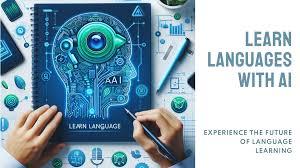The Silent Revolution in Language Learning Through AI

The world of education is witnessing a quiet transformation, one where Artificial Intelligence (AI) steps up as a personal language tutor. This emerging trend not merely complements traditional learning techniques but stands to potentially redefine them.
The Rise of AI in Language Education:
Traditional language learning routes often follow a predictable trajectory - textbooks, classroom instructions, and perhaps some interactive software. However, AI language learning introduces a dynamic shift towards personalized educational experiences that adapt to individual learner’s pace and style. With AI-driven applications, users embark on a journey tailored by algorithms that understand their strengths and weaknesses in language acquisition.
AI in this scope works under the hood to analyze countless data points derived from user interactions. Each corrected mistake, each hesitated response is fed back into the system, enhancing the AI's ability to respond more accurately to user needs. Over time, this allows for an experience that feels increasingly intuitive and effective, making the process of learning a new language less daunting and more engaging.
Empowering Language Learners with AI:
Learning a language with AI accommodates various learning environments, from the solo self-starter at home to classrooms integrating AI tools for enriched lessons. AI-driven programs can offer instant feedback - a privilege typically reserved for one-on-one tutoring. This means correcting pronunciation, grammar, and usage errors in real time, dramatically speeding up the learning process.
Moreover, these AI systems are always available, allowing learners to practice at their own convenience without being bound by the constraints of class schedules or tutor availability. This flexibility opens up new opportunities for consistent practice, essential for mastering a new language.
Cultural Nuance and Deep Learning:
One significant advantage that AI brings is its capacity to incorporate cultural context into language lessons. Beyond mere words and phrases, understanding idiomatic expressions, humor, and cultural references can be challenging. AI systems can introduce these complex aspects through immersive experiences like simulated conversations, interactive stories, and contextual analyses. By doing so, they offer a rounded understanding that prepares learners not just to speak but to communicate effectively in diverse settings.
Global Reach and Accessibility:
AI's potential to democratize language learning is among its most revolutionary aspects. Cost-effective AI applications can reach corners of the globe where traditional learning resources are scarce or unaffordable. For someone in a remote village with limited access to schools or libraries, an AI-based app could provide the same level of language education as that available in a high-tech classroom in New York or London.
Bridging Gaps through Comprehension Analysis:
A lesser-discussed yet critical role of AI in language learning is its ability to assess comprehension. Using AI to learn languages involves not just speaking and listening but also understanding context and meaning at deeper levels. Through continuous interaction with learners, AI can identify gaps in comprehension and adjust the curriculum accordingly to reinforce those areas.
A Quiet Reformation:
As we look at the boundaries being pushed by AI in language education, it's clear that a substantial shift is taking place - not amid fanfare, but as a quiet revolution transforming how languages are learned and approached. This silent revolution is making customized, effective, and interactive language learning accessible to anyone equipped with nothing more than curiosity and an internet connection.
The integration of AI into language education offers a blueprint for how technology can align very closely with human needs -enhancing, empowering, and enabling deeper connections across cultures through the power of communication. As this technology evolves, it promises not only to support language learners but also to knit the global tapestry tighter together through the shared understanding of languages.
Post Your Ad Here


Comments (1)
Deol simith7
I am guest posting provider
Good information thanks